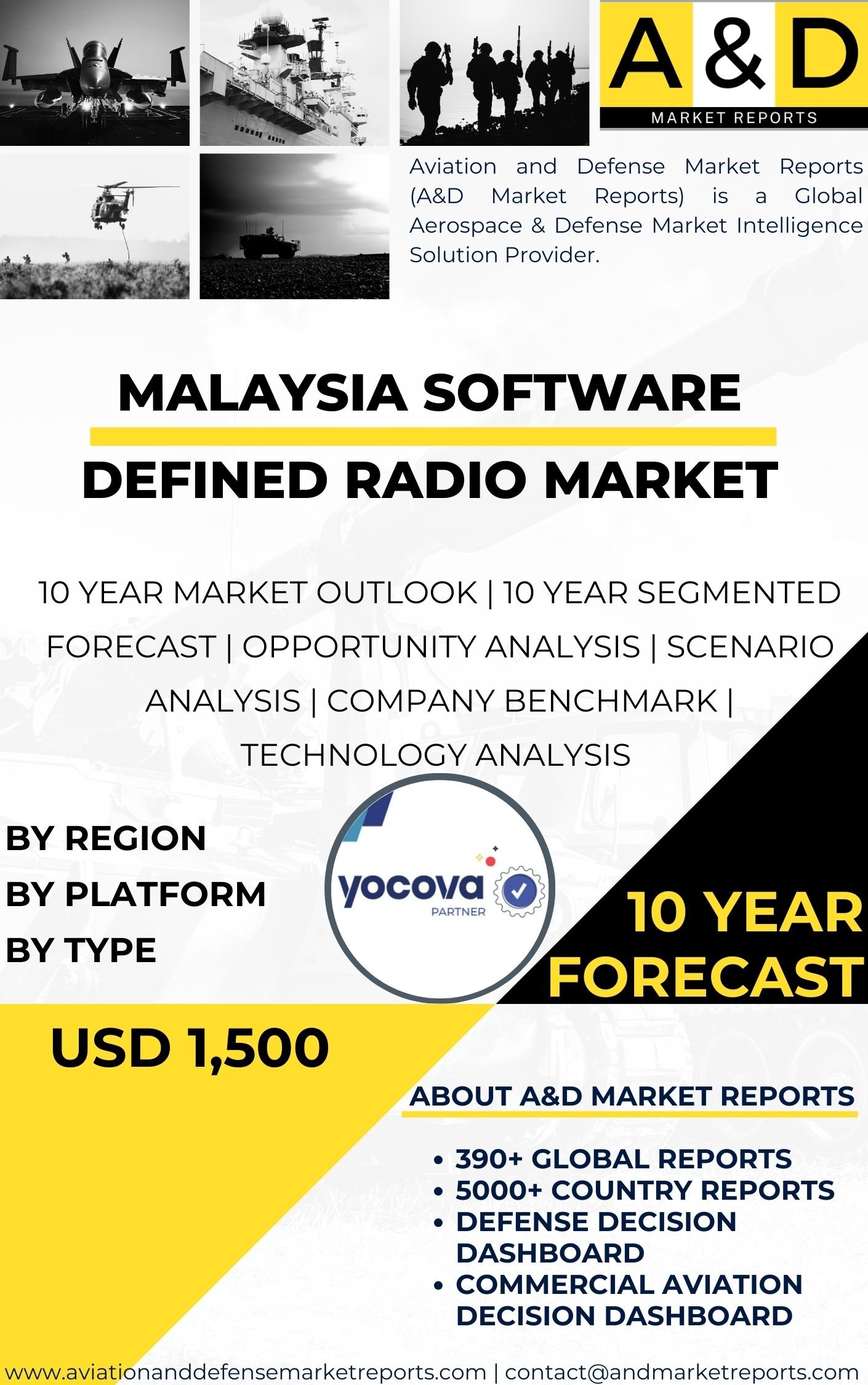Description
The Software Defined Radio (SDR) market in Malaysia has witnessed significant growth and development in recent years, reflecting the country’s commitment to enhancing its defense capabilities, modernizing its communication systems, and embracing cutting-edge radio technologies. Software Defined Radio is a versatile wireless communication system that uses software to implement various functions typically carried out by hardware components in conventional radio systems. The adoption of advanced SDR technologies enables Malaysia to establish a robust and modern communication infrastructure, contributing to the country’s overall defense preparedness, public safety, and technological innovation.
As a nation with strategic geopolitical importance in Southeast Asia, Malaysia faces diverse security challenges, including potential threats from hostile forces, cybersecurity risks, and disaster response requirements. The use of advanced SDR technologies enables Malaysia to equip its armed forces, law enforcement agencies, emergency responders, and critical infrastructure with highly flexible and secure communication capabilities to address these challenges effectively.
The SDR market in Malaysia has witnessed significant technological advancements. Modern SDR platforms are designed to support multiple communication protocols, frequency bands, and waveform standards, providing enhanced interoperability and adaptability. These advancements have expanded the capabilities and operational effectiveness of SDR systems, making them indispensable tools for modern communication networks.
Moreover, SDR technology plays a pivotal role in the Malaysian Armed Forces’ operational readiness. The Malaysian Army, Royal Malaysian Navy, and Royal Malaysian Air Force utilize SDR systems to establish secure and resilient communication links for command and control, intelligence dissemination, and situational awareness. The versatility of SDR platforms enables the military to adapt to various operational scenarios and overcome communication challenges in diverse environments.
Additionally, SDR technology has transformed civilian communication systems in Malaysia. Public safety agencies, such as the Royal Malaysia Police, fire departments, and emergency medical services, rely on SDR for reliable and interoperable communication during disaster response and crisis situations. The flexibility of SDR platforms allows these agencies to communicate seamlessly across different frequency bands and protocols, enhancing coordination and collaboration in emergency situations.
Furthermore, the adoption of SDR supports Malaysia’s commitment to technological innovation and enhancing its defense industrial base. The Malaysian government has shown interest in developing and producing advanced communication systems through local research and development (R&D) initiatives and partnerships with global technology providers.
The Malaysian government has recognized the importance of international collaborations in acquiring and developing SDR technologies. Partnerships with leading global communication technology companies and defense contractors have facilitated access to cutting-edge SDR systems and expertise. These collaborations have enabled technology transfer and capacity building, contributing to the growth of Malaysia’s domestic SDR capabilities.
While the SDR market in Malaysia shows promise, it is not without challenges. One of the primary hurdles is the need for comprehensive regulations and policies to govern SDR operations. The Malaysian government must establish clear guidelines for spectrum management, radio frequency licensing, encryption protocols, and cybersecurity measures to ensure responsible and secure SDR usage.
Moreover, ensuring skilled operators and specialized training are essential for maximizing the benefits of SDR. The Malaysian Armed Forces, government agencies, and commercial users must invest in continuous training and education to ensure their personnel possess the necessary expertise to operate SDR systems safely and effectively.
Additionally, promoting public awareness and acceptance of SDR technology is crucial. Educating the public about the benefits of SDR while addressing concerns related to privacy, security, and electromagnetic interference will foster greater public support for the adoption of SDR in various sectors.
Looking ahead, the SDR market in Malaysia is poised for further growth. The government’s commitment to technological innovation, defense capabilities, and public safety will drive continued investments in SDR systems. As SDR technologies continue to evolve and demonstrate their effectiveness, they are likely to play an increasingly pivotal role in Malaysia’s communication networks, emergency response capabilities, and technological advancement.
Moreover, Malaysia’s participation in regional communication collaborations and joint exercises will likely influence its SDR requirements. As the country seeks to strengthen its position as a key player in regional communication technology development and application, the demand for advanced SDR systems with interoperability and compatibility with allied forces will increase.
In conclusion, the SDR market in Malaysia has experienced significant growth and progress. The government’s focus on technological innovation, defense capabilities, and public safety has paved the way for the integration of modern SDR systems into various sectors. International collaborations and domestic research efforts have positioned Malaysia as a participant in the global SDR technology landscape.
However, challenges related to regulations, training, public acceptance, and engineering expertise must be addressed proactively to sustain and enhance the growth of the SDR market in the years to come. By maintaining a modern and capable SDR infrastructure, Malaysia can effectively enhance its defense preparedness, public safety, and overall technological innovation.




